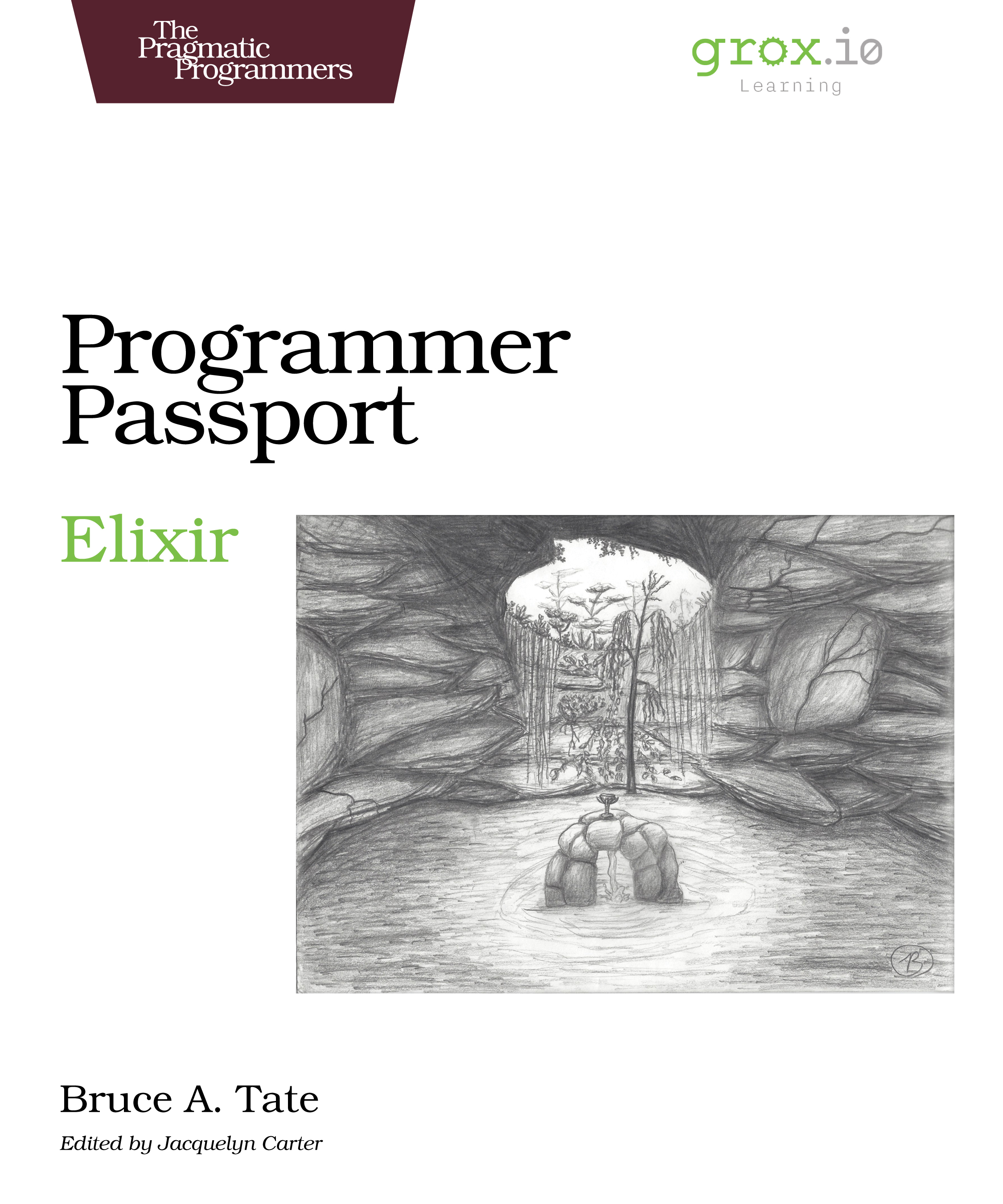Programmer Passport: Elixir
by: Bruce Tate
| Published | 2022-05-26 |
|---|---|
| Internal code | passelixir |
| Print status | In Print |
| Pages | 130 |
| User level | Intermediate |
| Keywords | elixir, BEAM, functional programming, erlang, uptime, reliable, scalable, concurrency, parallel, distributed, |
| Related titles | Programming Elixir 1.6 by Dave Thomas |
| ISBN | 9781680509625 |
| Other ISBN |
Channel epub: 9781680509656 Channel PDF: 9781680509663 Kindle: 9781680509632 Safari: 9781680509649 Kindle: 9781680509632 |
| BISACs | COM051230 COMPUTERS / Software Development & Engineering / GeneralCOM051010 COMPUTERS / Programming Languages / GeneralCOM051010 COMPUTERS / Programming Languages / General |
Highlight
Elixir is a functional language that crosses many boundaries. With a syntax borrowing heavily from Ruby, a runtime that is on the Erlang BEAM, a macro system like that in Lisp, and a streaming library like you might find in Haskell, Elixir takes the best features from many environments. Elixir borrows from Erlang’s “Let It Crash” philosophy, and adds significant improvements with structs, first-class hygienic macros, and abstractions such as protocols. Many of these ideas were borrowed from other communities, and they make a big difference in language adoption. This book gives you a quick guided tour through the fascinating world of Elixir!
Description
Explore Elixir with the author of Seven Languages in Seven Weeks. In this fast-paced book—first published with Groxio’s Programmer Passport—you’ll discover how Elixir’s fantastic documentation, clear error messages, and excellent tooling make it approachable and easy to work with. Learn about techniques other books skip, like writing your own Mix task, and discover several blind spots that beginning and intermediate Elixir developers encounter.
Effective Elixir depends on getting the most out of the most common datatypes—explore the most important ones before using them to write modules and different kinds of functions. Learn when to choose tuples, maps, or lists in your programs, and the most effective ways to access lists. Understand the differences between maps and keyword lists. Learn the primitives Elixir uses to start multiple processes and send messages between them. You’ll finish the book by dabbling with the advanced techniques of streams, sigils, and macros.
Find out what Groxio customers already know. The assistance of an experienced guide will help you learn Elixir more quickly than you could without one.
Contents and Extracts
- Sweet Tooling
- Based on Erlang
- Beyond Erlang
- Tools
- Mix Manages Development Tasks
- IEx: Interactive Elixir
- Built-in Testing
- Custom Mix Tasks
- Sound Dependency Management Fuels Adoption
- Your Turn
- Data and Code Organization
- Atoms, Pattern Matching, and Erlang Access
- Booleans and Truthy Expressions
- Numerics Favor Utility over Performance
- Characters Are Code Points
- Elixir Deemphasizes Control Structures
- Your Turn
- Tuples and Functions excerpt
- Tuples, Deconstruction, and Pattern Matching
- Functions and Code Organization
- Advanced Pattern Matching and Constructors
- Your Turn
- Lists and Algorithms
- Lists
- Pattern Matching and Lists
- Recursion over Lists
- Reduce and Anonymous Functions
- Implement a Polygon
- Your Turn
- Key-Value Data
- Keyword Dictionaries
- Maps
- Map Manipulation
- Using Maps in Bulk
- Structs Are Restricted Maps
- Structs, Maps, and Public APIs
- Your Turn
- Processes and Concurrency excerpt
- Processes, Inboxes, and Pattern Matching
- Put It All Together in a Message Loop
- Your Turn
- Blind Spots
- Sigils
- Dates, Times, and Comparisons
- Binaries and Bit Strings
- Your Turn
- Macros
- Elixir’s AST
- Unquoting, Quoting, and defmacro
- Introduce a DSL
- Your Turn
